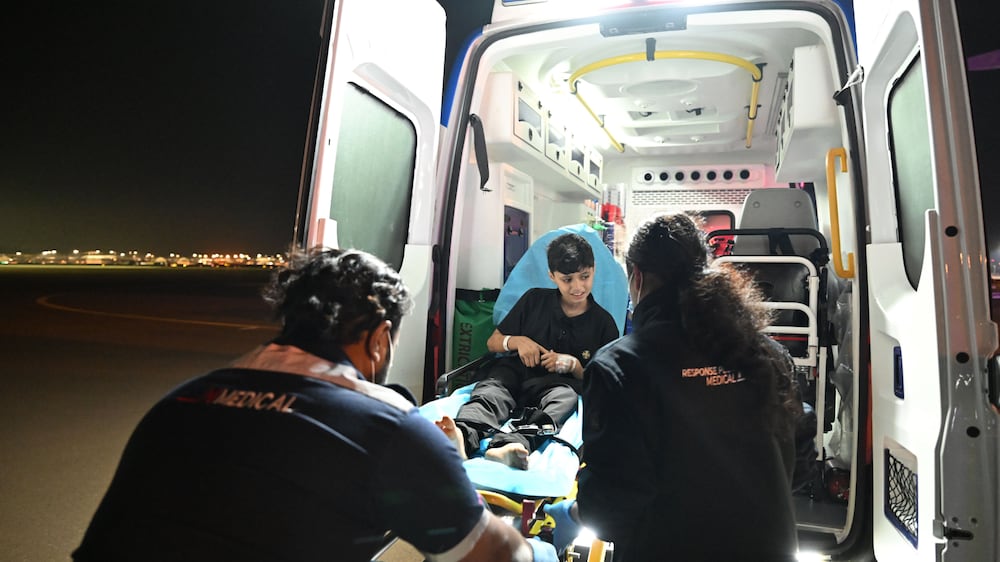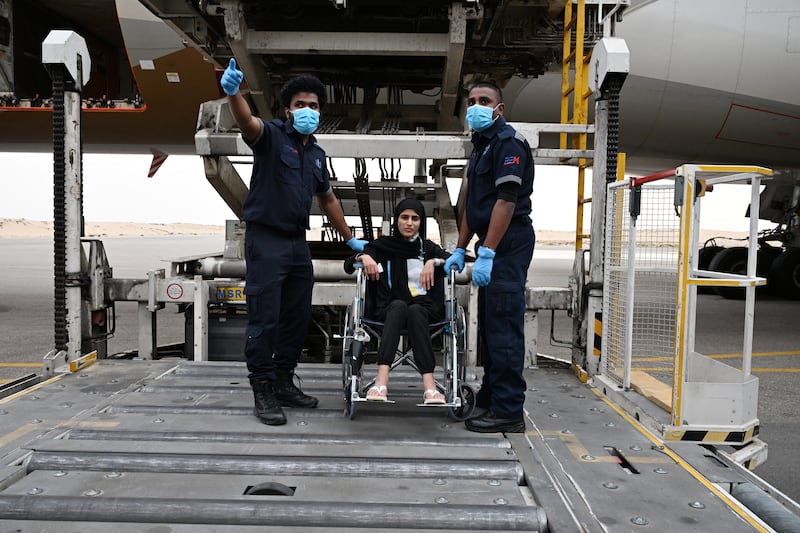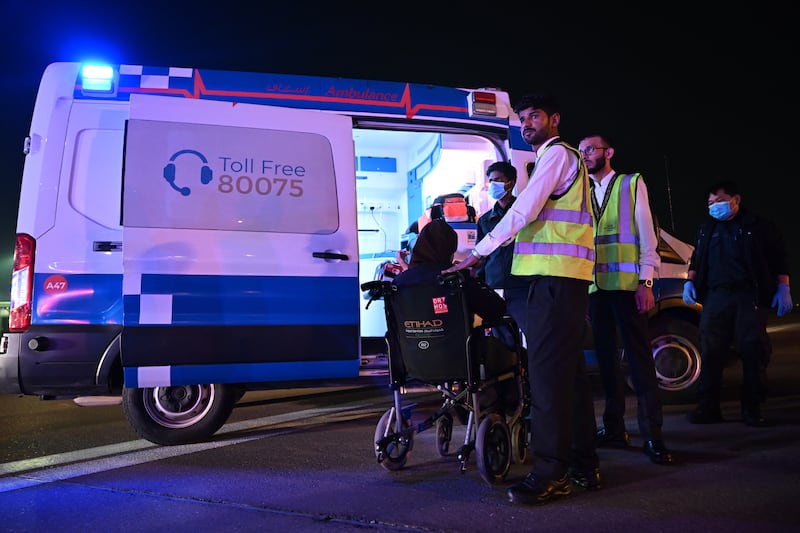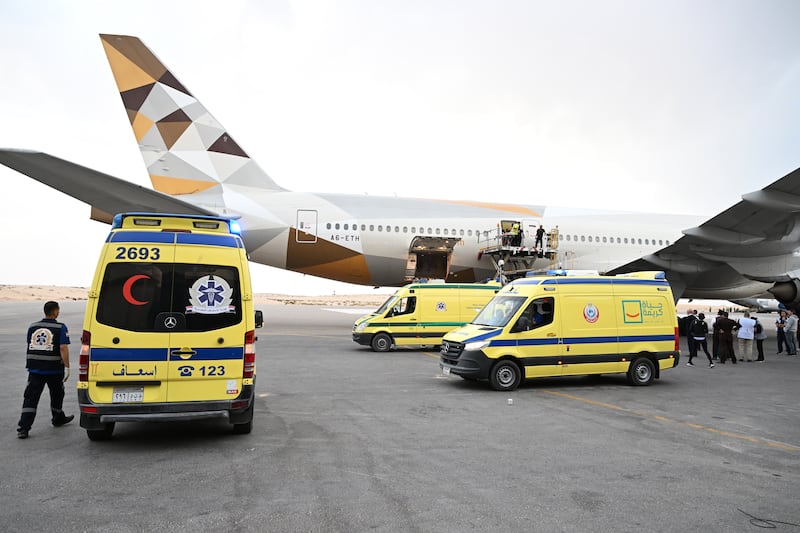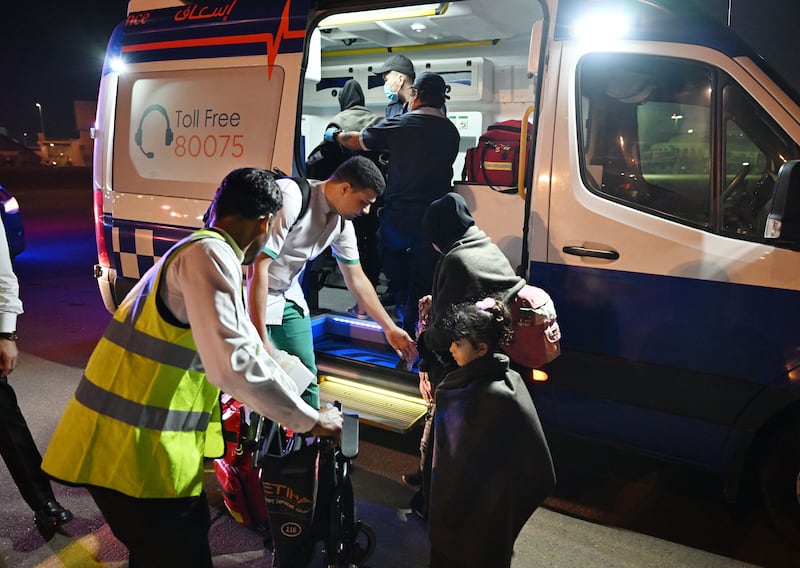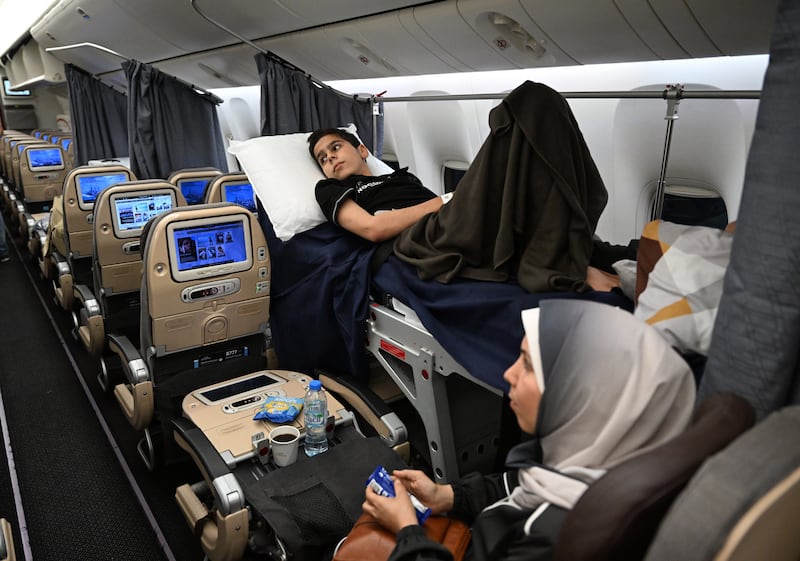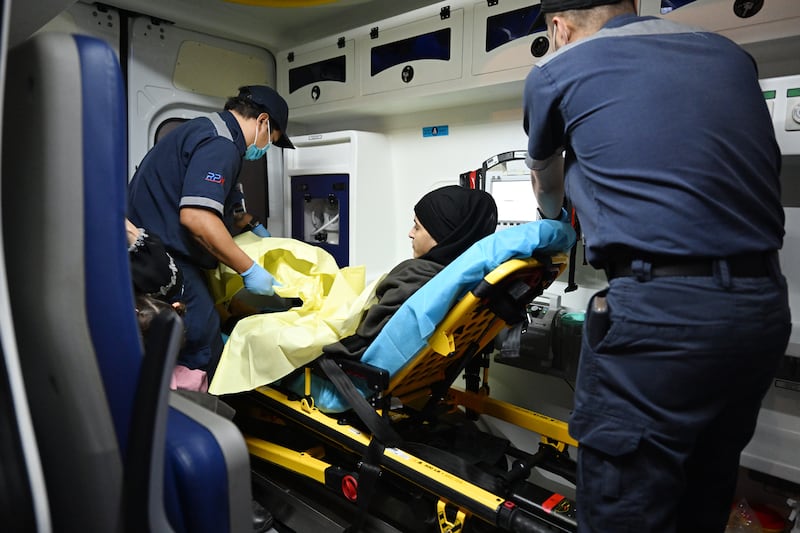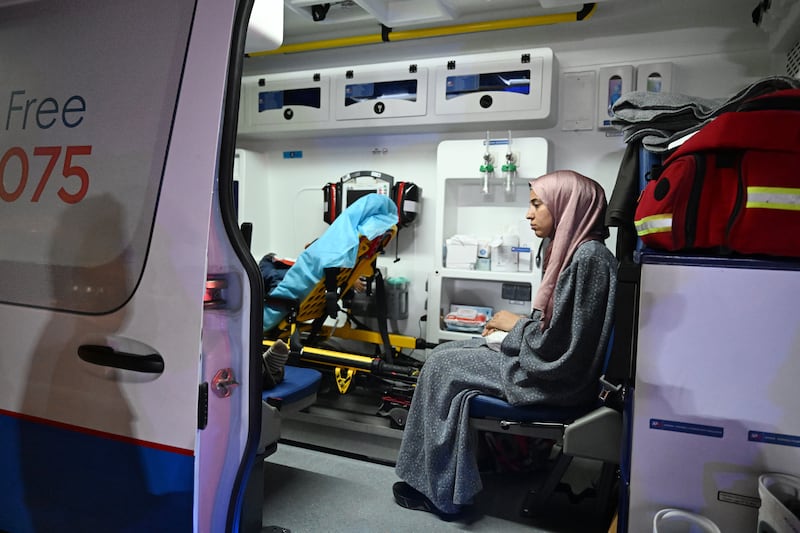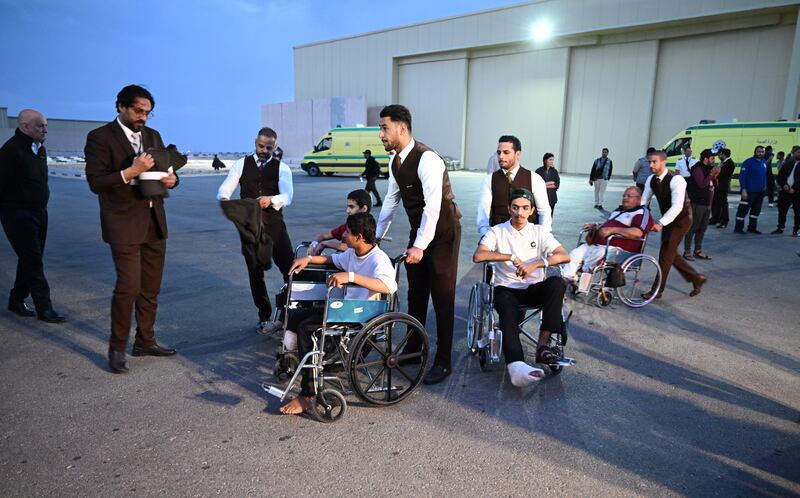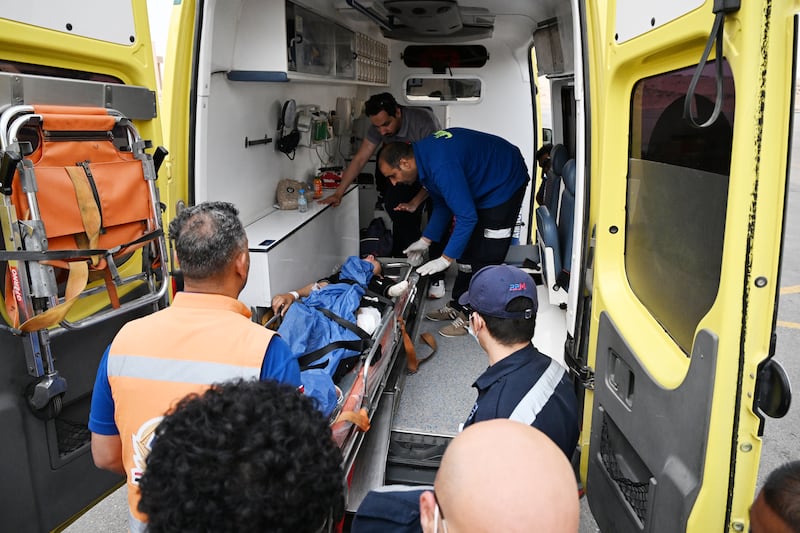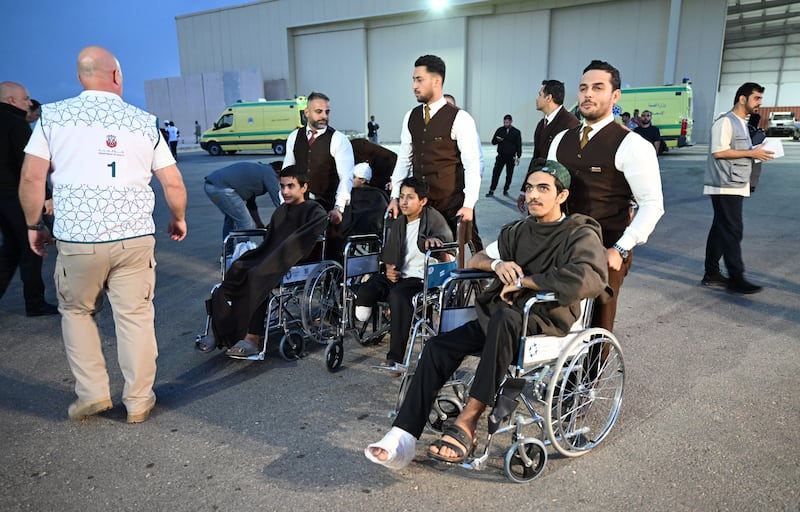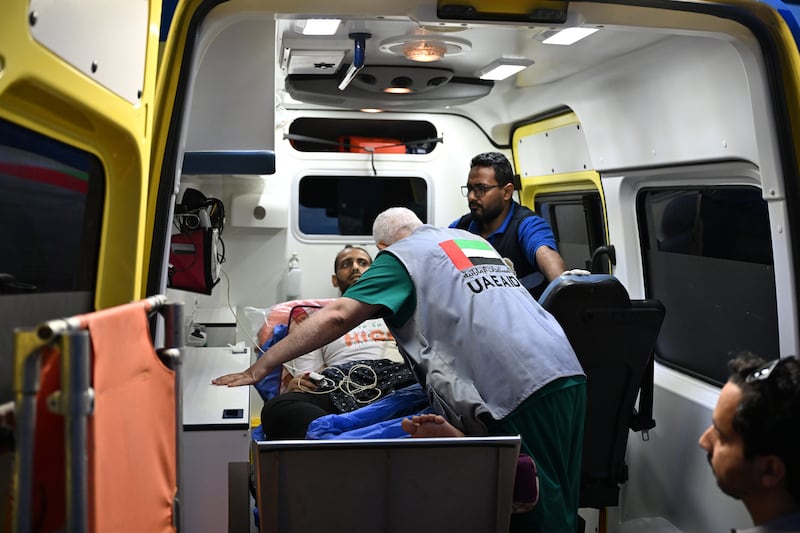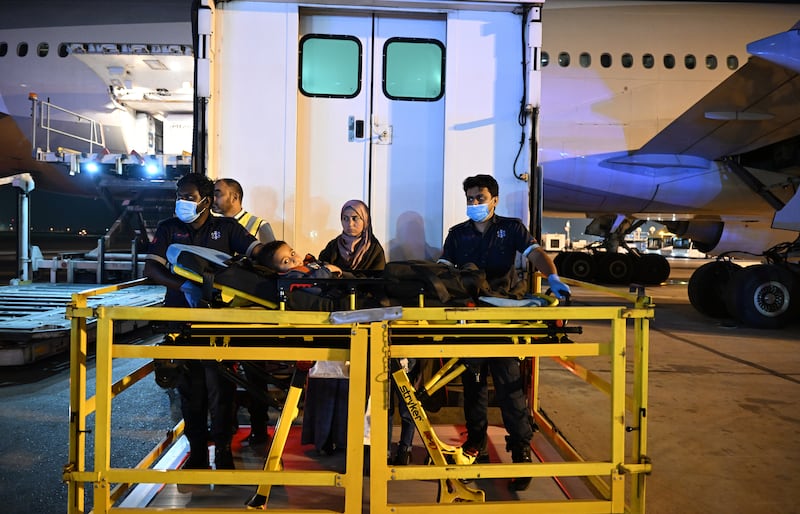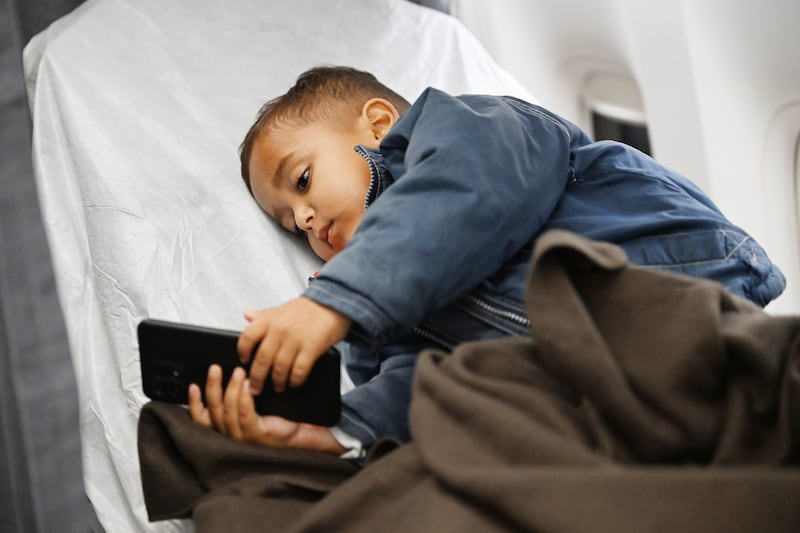Live updates: Follow the latest on Israel-Gaza
With her face buried in her mother's chest as doctors and nurses rush around trying to attend to the sick and wounded Gazans aboard a Boeing 777 Etihad flight to Abu Dhabi, four-year-old Maram prays.
“Oh God, I hope you heal me. And make me well. And make me go back to the way I used to be. Amen.”
Maram was injured by an Israeli attack. She has shrapnel in her skull which damaged the retina in one of her eyes. She cannot see where she is, but she knows she will soon be on the way to Abu Dhabi, where the doctors will make her well.
She was one of 25 patients who were transported in a journey beginning on Friday from Al Arish in Egypt to Abu Dhabi and arriving early on Saturday for treatment. It was the 16th flight by the UAE in an initiative that has brought about 1,000 cancer patients and 1,000 more injured from Gaza for medical assistance along with close family members.
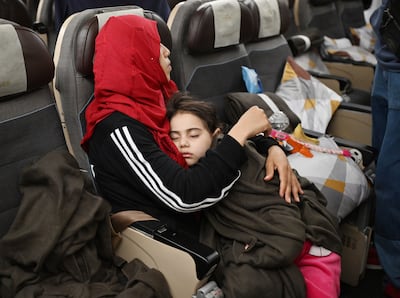
The task of converting a Boeing 777 commercial flight into a flying hospital is one that involved several teams working together and in close co-ordination with government departments and the private sector.
How the plane is prepared
The plane is divided into three parts, in terms of patients, medical commander Joe Coughlan told The National aboard the flight en route to Al Arish.
“There are patients that will need to come in on stretchers and they’ll come in through the high-loader and through the door. We've selected the right door, because relative to the type of loader and air frame [the type of aircraft] are nuances that force you to manoeuvre a little bit,” he says.
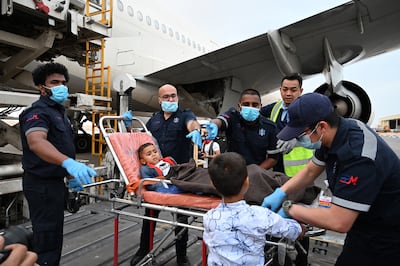
Walking patients, who are able to climb the stairs normally, and their escorts, sit normally in one of the 200-plus chairs. But even here there is a strategy, as patients are given aisle seats and their companions are placed in the middle.
“You don't want to be reaching over to treat someone when you could have access to them directly, Mr Coughlan tells the staff during a medical briefing on the plane before the patients had arrived.
Then there are people who need wheelchair access. They are given seats by the emergency exits to allow them more legroom and because it is easier to move a wheelchair in larger spaces.
Strategy is important in the planning stages.
“It's like dropping a stone into a well and seeing how many ripples come after that because every ring that comes out affects a different part of the system,” Mr Coughlan says.
“Let’s say we want to put stretchers in – that’s the drop.”
Things like the safe exit from the aircraft, the type of plane and the space around the stretchers themselves are taken into consideration.
The plane is also equipped with resuscitation beds, which in hospitals typically give medical teams 360º access.
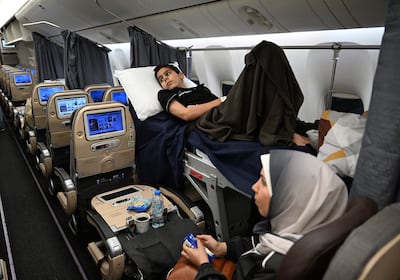
“We have to do the exact same in that setting here but of course we’re up against the side of the aircraft – so we have then to learn the new limitations and find the solutions to those limitations and that’s the opportunity which we find on every mission in order to find something, fix it and make it better.”
Improvements are constantly being made to the different flights, Mr Coughlan says.
In an earlier iteration of this evacuation trip covered by The National, the plane would first pick up the passengers from Al Arish then head to Cairo, where the Etihad crew would be switched out to prevent them from exceeding their working hours. But after receiving the necessary approvals, the flight now stops at Cairo before heading to Al Arish, allowing the plane to head to Abu Dhabi directly from the Egyptian city closest to Gaza with no stopovers.
“That's been the key. Flexibility and adaptability in our mindsets allows us to approach problems with the mindset that allows us to fix it. It's not always A plus B equals C,” he says.
The power of perception
People who come from Gaza for treatment in Abu Dhabi have to go through the Rafah border crossing and from there, take a 45 minute drive to Al Arish, usually by minibus.
They are stopped at several checkpoints where their papers are checked and rechecked. Mr Coughlan says one of the purposes of the trip to Abu Dhabi is to put the Gazans at ease as the situation is going to be different from that point on.
“We don't know what they were going through before they got to this process but we can only imagine.
“At every step they would have seen an authority figure – a police officer, an immigration officer, or a member of the military. Everybody has their jobs and roles to do.”
But when arriving at Al Arish, Mr Coughlan says, the Etihad crew's role becomes vital.
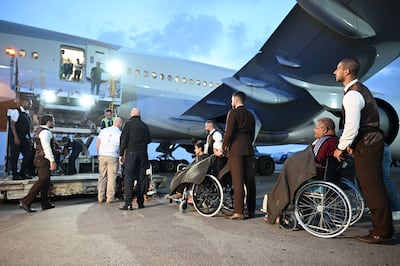
“Etihad crew members have their uniforms but they're not the authority figure. So it's a matter of perception.”
Mr Coughlan says people who work in the airline industry such as Etihad crew members have a “super human strength” in their ability to deal with people on a daily basis.
“They do it so well and don't even recognise how efficient they are at it. It's amazing to see.”
The Etihad crew approach them with a big smile, and treat them with “tenderness, kindness and genuine interest to make sure they are OK”.
“They give them these virtual hugs and that's part of the psychological process when the patients realise it's all coming true.”
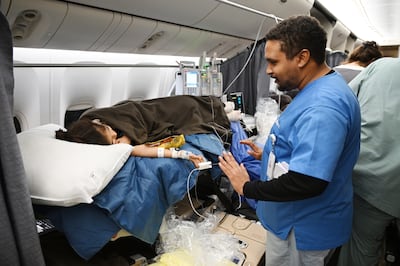
Cabin manager Kiran Sadasivan has been on board all but two of the flights. The level of hospitality offered on board evacuation flights from Al Arish exceeds that seen on-board typical commercial flights, he says.
When men, women and children board these flights exhausted, sometimes in pain and discomfort, there is a lot to do in the first few hours before take off. Usually, this is handled primarily by the medical staff. But airline crew members continue to work in the background, getting blankets, food, drink, opening and closing bathroom doors for people who have never used a plane toilet, calling nurses when someone needs assistance and making sure that companions are well-fed too, offering them snacks including fruit and sweets.
“I haven't seen a banana since the beginning of the war,” Alaa, a mother of two, tells The National as a cabin crew member handed her one.
Ghadeer, an oncology patient in her 20s travelling with her mother and two children, says she has been craving marshmallows for months.
“They [Israel] left us wanting things from our childhood,” she says as she eats some while lying back on a stretcher on board the plane as an IV drip gave her more nourishment.
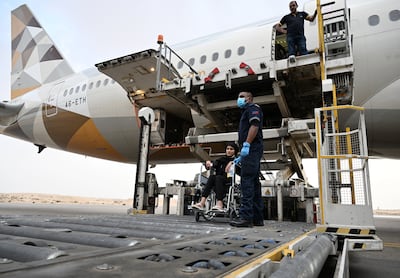
“On a normal flight, we greet them, have them on board, provide them with food and interact a little bit with them and end the relationship when the flight ends,” says Mr Sadasivan.
But on board evacuation flights, he said, the job is to do even more.
“We make an impact on the people we receive here. We provide them with care and we give them whatever they have missed in the last few months.”
Mr Sadasivan says the impact is seen immediately.
“They never forget us. They never forget us. Each and every team member I have with me on all the missions I'd say 99.9 per cent have done it from their heart and they're happy and proud of what they've done.”
